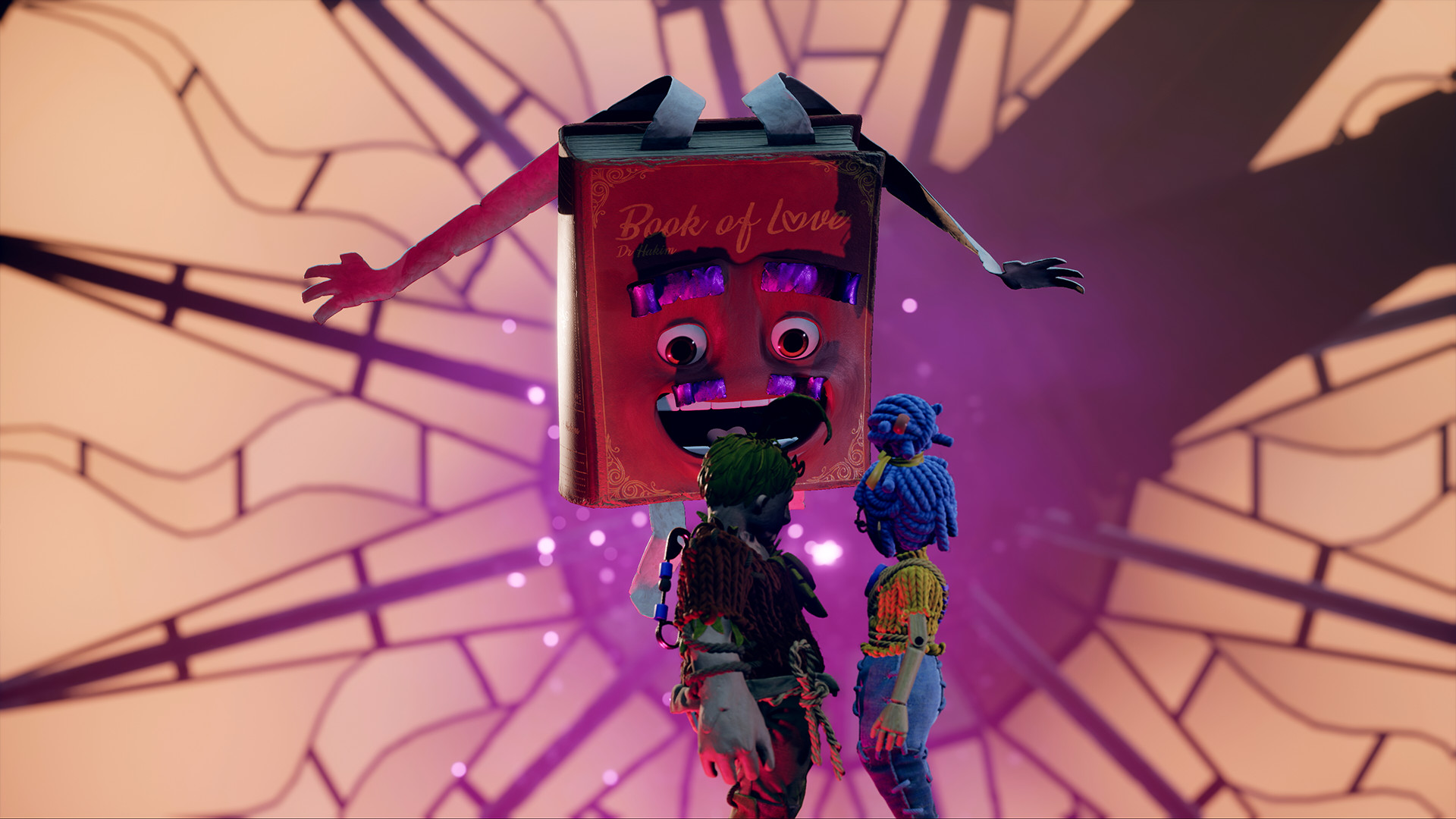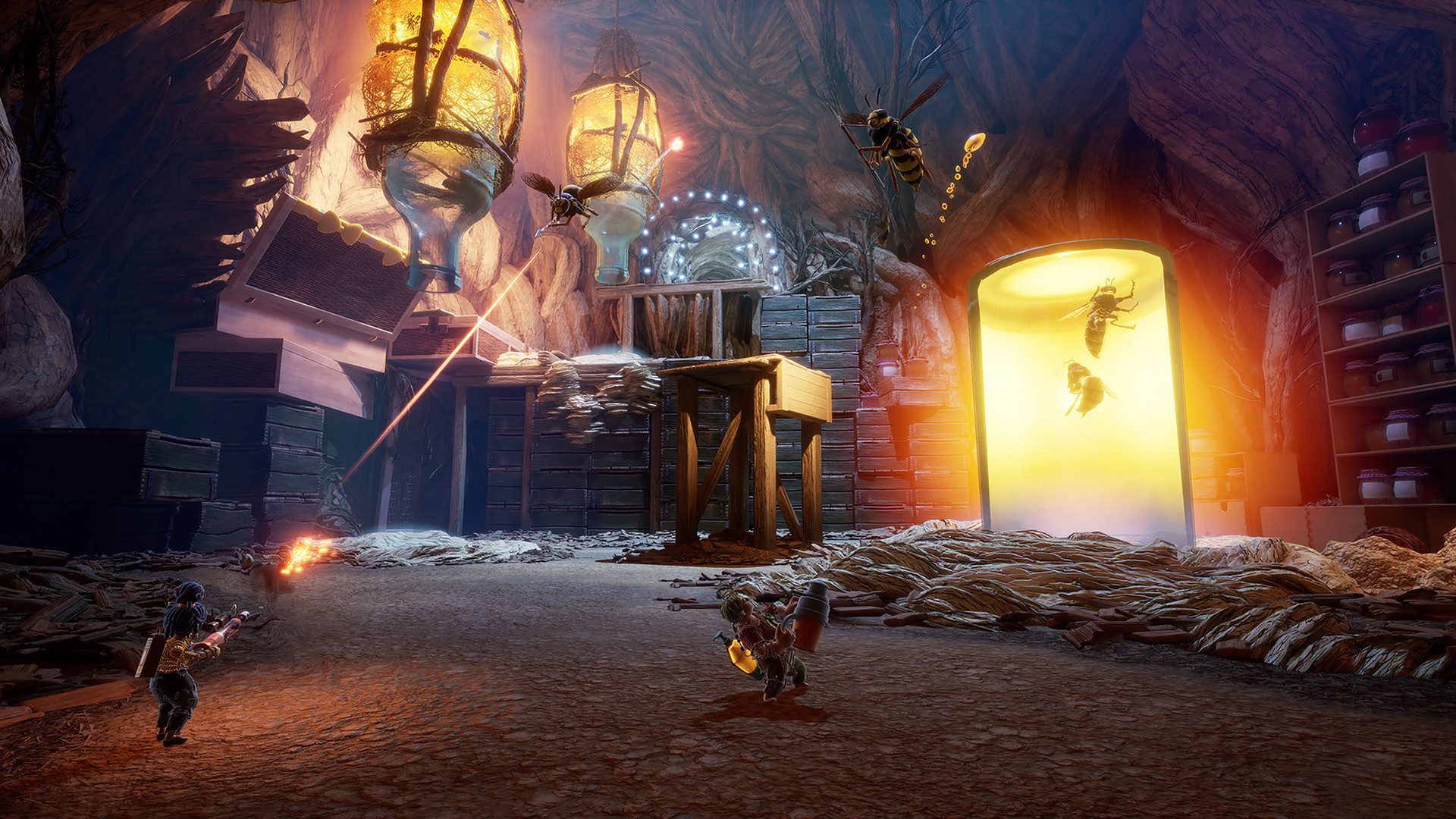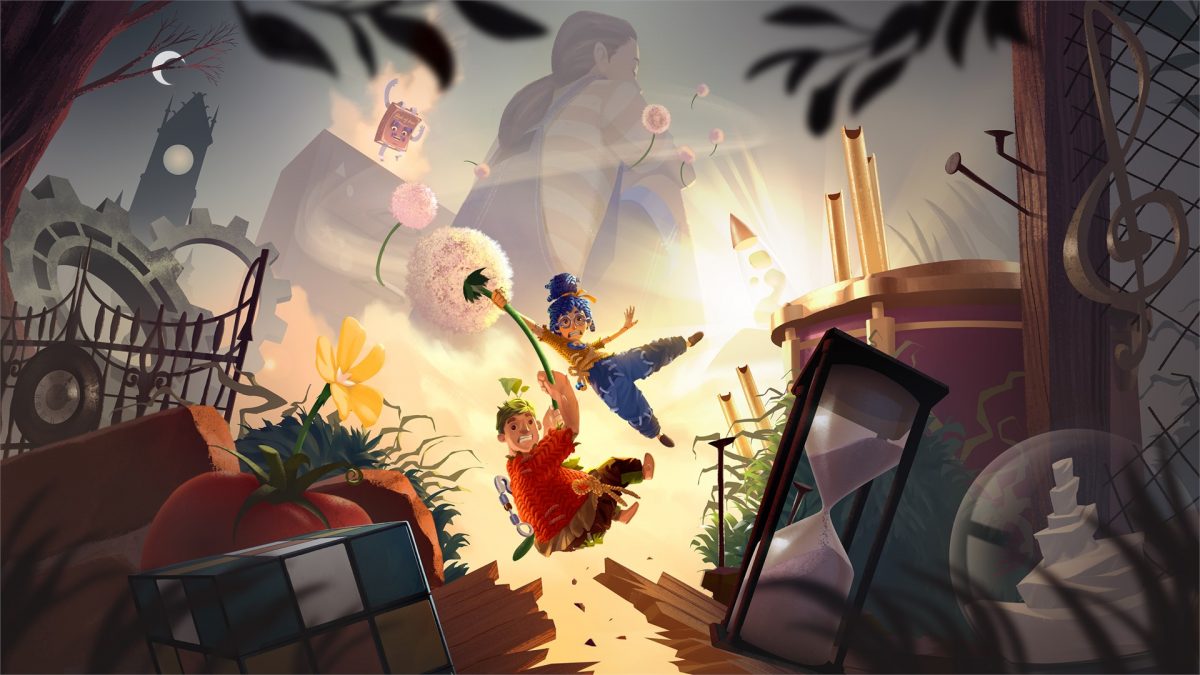Looking for the Quick Review?
In the final days of 2021, I finally pulled myself together and beat Brothers: A Tale of Two Sons, a very short but incredibly endearing game about two brothers and the lengths they go to secure medicine for their dying father. It’s a single-player game with a unique control scheme that requires one player to navigate simultaneously as both brothers. When I compiled my list of the games I enjoyed the most in 2021, I called it the best single-player co-op game I’ve ever played. And I meant it. But even then, I had to acknowledge that it didn’t mean much. It was the only single player co-op game I’d ever played.
Brothers was Josef Fares’s first game, published in 2013. Just under eight years later, he put out his third, It Takes Two. And what Fares’s first game accomplished in my made-up genre of “single-player co-op” It Takes Two far and away did for the world-recognized actual co-op.

I completed It Takes Two at the end of February 2022, just a couple of months after beating Brothers. And unlike that game, which, again, can only be enjoyed solo, this one requires the help of a second person. So I played with my partner. Fresh off a run of being (frequently) reminded how bad we are at Spelunky 2, I think we were both ready for something more accomodating. I’d seen the media response to It Takes Two, and I was hoping it’d fit the mold. I didn’t expect it to be the best cooperative gaming experience we’d ever had.
The best way I can think to start talking about It Takes Two is to acknowledge that, in the broad field of cooperative games, there are games that allow you to play cooperatively and there are games that require cooperation. The former category includes any game that lets you play side-by-side with friends but requires only limited teamwork. You might do better if you focus on the same objective or try to help each other out, but you’ll have no problem going at it alone. Think Borderlands. Games that require cooperation, in contrast, don’t afford that same level of liberty. You’ll have to talk to each other, work with each other, and in some cases, disagree with each other. A game like Portal 2 doesn’t let you run off on your own. You’ll need your partner’s portals too.

It Takes Two, as you might imagine, also falls into that second category. This is a game about working together. It’s fitting, given that the story is that you and your partner are a divorcing couple trapped in toy bodies your daughter crafted in your image. Each level is a lesson in cooperation for two people who have forgotten to cooperate.
That said, you’d be leaving with the wrong impression to think that the game feels like couples therapy. Our two protagonists, Cody and May, have a lot to hash out, but we as players are merely along for the ride. Almost ironically, this game about two people who can’t get along is, again, the best-designed co-op game I’ve ever played.

Some cooperative titles pride themselves on challenging relationships. I’ve heard people describe games like Overcooked as “friendship enders”. Ironic only to those who know not the fury of a friend bumbling into an open hole and losing the last of a shared pool of lives, those who have suffered through their friends’ reigns of terror know that games designed to inspire cooperation can end up having the opposite effect. Some co-op games require a sort of constant communication and involve sequences where one player’s mistake can easily spell doom for their partner. If I prepare a complex dish in Overcooked and my partner throws it off a ledge by mistake, we both just lost a star and she just broke my heart.
It Takes Two doesn’t entirely do away with these trust exercises, but they’re a lot more infrequent and significantly more forgiving. It’s not handholding; the game is still challenging, it’s just more individually challenging. In most cases, your mistake only affects me if I also mess up. Maybe you should’ve pressed the red button instead of the blue, but it’s my fault for jumping when I knew you hadn’t.

Similarly, the game’s failure state only triggers when both players are dead at the same time, making it (more) difficult for one to blame the other without admitting to capital hypocrisy. These design choices have the effect of minimizing anger and frustration, but they also serve to make victories more positive. Your partner’s performance won’t independently damn you, but it could easily be what saves you.
Under the guise of relationship repair, gameplay generally revolves around a series of level-specific mechanics that require both players to work together in new and interesting ways. An early level gives Cody the ability to launch nails like javelins and May a hammer that allows her to swing on and jump between them. In another, Cody can fling globs of explosive sap at targets at will and it’s up to May to use her torch to ignite them.

The game doesn’t linger on any mechanic for too long, and each level has a nice balance of puzzles, exploration, and story. It maintains this sense of freshness until the end, and my partner and I were always excited to discover the next level, to learn and to master the next new mechanic.
There’s a lot to love about how this game looks and plays, and I think it’s understandable that the story takes a backseat to all of that. But I also think it’s worth noting that I found the pacing of that story a tiny bit fuzzy at times. The reconstruction of Cody and May’s relationship feels nonlinear and slow. And, yeah, that can be realistic. But it seems like we spend a lot of time with the two really not liking each other and very little with them in more amenable moods. I understand that we’re dropping into the shoes of a couple who have been at odds for longer than we can know, but I remember being several hours into the game and thinking “should they really still be bickering like this?” The gameplay seems to set the story up for a bigger victory than it ends up claiming — the two are actively working together long before they’re willing to admit it. And when they finally manage to obtain that breakthrough moment, as nice as it feels, I think it’d feel nicer if the ramp up to it was more consistent.

The story beyond the world Cody and May built for themselves is delightful. Characters like the squirrel militiamen and the ever-purposeful Moon Baboon are great and serve to breathe even more life into this already-vibrant world. And, alright, if we’re investigating that world, I suppose I can’t get any further without acknowledging the… elephant in the room: it’s not all delightful. A story about divorce can’t be entirely rainbows and Moon Baboons. For it to be done well, there have to be darker moments. And most of those darker moments feel at home in It Takes Two, but there’s one beat of the third level that surpassed all the discomfort we’d felt up to and all of the discomfort we would feel after it by bounds. The level of cartoon violence and suffering is jarring and it doesn’t really seem to faze our two leads at all. If you’re a heartless capital-G Gamer, you might be able to soar through this section without a care. But if you, or the person you’re playing with, has any sort of conscience, it’ll stay with you.
It took a while to get back into the happy swing of things after that bit, but we did get there, and it’s there that we made our home for the rest of the game. We continued to delight in exploring the worlds and mastering the new mechanics thrown at us. We challenged ourselves to seek out each of the hidden mini-games, short Cody-versus-May experiences that almost have no right to be as fun as they are. Examples include “Whack-a-Cody”, wherein one player plays whack-a-mole and the other plays mole; the mole earns points for each second they can remain out in the open without being whacked, and the whacker wins a point for each mole she whacks. There’s tug-of-war, there’s a minigame that requires both players to shoot plungers at targets faster than the other, there are several retro arcade games. In all, there are twenty-five minigames. I’ll be honest: we haven’t managed to discover all of them yet, but the ones we did find we had a blast with.

If you’re in search of a cooperative game, I struggle to imagine a world in which It Takes Two isn’t at the top of my recommendations. This was, from start to finish, a lovely game that my partner and I deeply enjoyed. Up until the end, we always found ourselves looking forward to jumping back in and experiencing what this next level would change up, what new minigame we’d be introduced to, where the story would take us.
It Takes Two is, without a doubt, my new gold standard for narrative co-op. It’s a wonderful game. I was happy to share it with my best friend, and I hope your experience echoes ours.

Quick Review
Game: It Takes Two
Developer: Hazelight Studios
Published by: Electronic Arts
Available for: Windows PC, Playstation 4, Playstation 5, Xbox One, Xbox Series S/X
CONTENT
Microtransactions: None
Tedium: None
Violence: Cartoon violence, plus one scene involving… cartoon stuffed animal torture? Yeah.
Content: Some adult themes.

FEATURES
- Perfect cooperative gameplay
- Narrative focus
WHAT I LIKED
- The Co-op – It Takes Two is my new gold standard for how co-op should be done. Working together is necessary, not frustrating, and failure doesn’t feel like a burden on one partner.
- Creative and beautifully-crafted miniature environments – The scope of this game’s setting is incredibly limited, encompassing one rural house and backyard. The amount of creativity used to fill that space with an incredible breadth of places and characters is insane. There’s bright, childlike fantasy, serious bee-against-squirrel warfare, and awesome, science-fictiony space exploration. Each level is a unique self-contained environment with its own perfected vibe and aesthetic. I wasn’t ready to leave that snow globe ski lodge.
- The Co-op – Don’t you hate it when self-important writers do this? I don’t care. Not now. It bears repeating: the cooperative gameplay is excellent. One of the greatest strengths of this game is its ability to create a shared experience. I wanted to press forward, to explore new environments and abilities, but I wanted to do it all with my partner. I was excited to jump back into the game, but I was just as excited to step away and to talk about our experiences while we prepared a meal or brushed our teeth. Weeks later, we’re still searching for the sort of high this game gave us.

CONCERNS
- Content – If you read the full review, I make a big deal about a quasi-cartoon torture scene that occurs pretty early on in the game. Don’t let me exaggerate; it’s not gonna fuck you up for real, but it’ll make clear that It Takes Two, despite its childish aesthetic, isn’t really a children’s game. This is the story of a divorcing couple attempting to put their relationship back together. Sometimes they say naughty words. To me, it’s all the better for it. Honestly, this was the best thing I could do when pressing myself to come up with an honest complaint. It’s just so good.
WHO’S IT FOR?
If you have a friend with whom you’re interested in sharing a really lovely time in a (mostly) fun and cozy world, it’s impossible for me to not recommend It Takes Two.
If you’re in search of a solo experience or the sort of chaotic relationship challenging that comes from games like Overcooked, consider looking elsewhere. It Takes Two is a beautiful, harmonious experience that’s meant to be shared.

Credit for all images goes to Hazelight Interactive. Playing this game on our TV with Xbox controllers meant I was precluded from my obsessive screenshot-taking.
